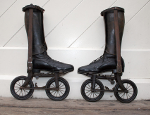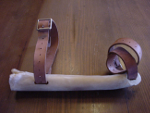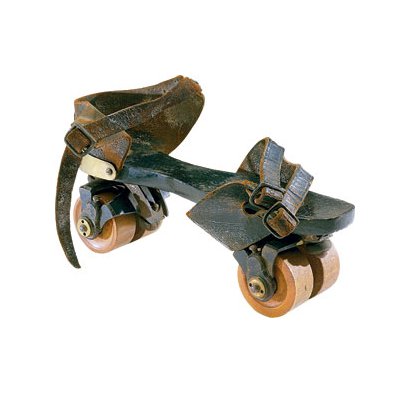Ritter Road Skates

Plimpton Skate

In 1863, James L. Plimpton changed the skating world forever when he patented the forerunner of the modern roller skate. Safer and easier to use than existing versions, which were little more than wheels attached to rigid boards, his "rocker skate" allowed skaters to steer simply by leaning left or right.
Roller-skating boomed. In the 1860s, Plimpton set up a skate factory and opened America's first roller-skating rinks in New York City and Newport, Rhode Island, where he leased skates to customers. Skating soon became a popular family activity. The New York Roller-Skating Association—the first of its kind—and other clubs held speed and distance competitions in cities across the United States.
Skate prototype, about 1860 Plimpton's patented skate was the first of its kind. Rather than affixing the wheels directly to the plate of the skate, Plimpton designed his skate like a wagon wheel so that it could move independently of the plate itself. This allowed the skate to "rock" and, therefore, turn more easily than its predecessors.
5000 year old origin of Ice Skating

Finns looking to cut back on travel time were the first to use ice skates about 5,000 years ago, a new study suggests. The southern portion of Finland is the only place icy and flat enough to make traveling by skates – at that time made of animal bones – worth the energy, scientists discovered. "We found this by measuring heart rate, oxygen consumption and speed of people skating on replicas of bone skates and by means of a computer simulation of several 10-kilometer [6.2 mile] journeys in five areas," said Federico Formenti, a human biomechanics specialist at the University of Oxford and co-author of the study.


